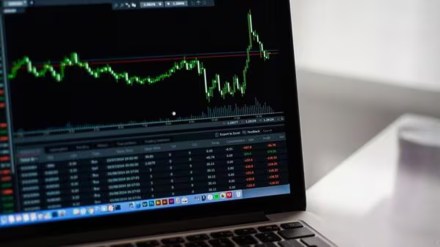With domestic investors pumping in money by the fistful, Samvat 2080 was the second-best year for equity investors in a decade, as a strong economic momentum and a surge in the number of new local investors fuelled a strong rally.
The year that came to an end on Thursday saw Sensex and Nifty give 22.3% and 24.6% returns, respectively. The broader market continued to be a step ahead with the BSE Midcap index surging 41.1% and the BSE Smallcap index posting 43.3% gains.
“This was actually a very good year for investors. Across the board, all the asset classes — be it equities, fixed income, gold — created wealth. And equities were among the best ones with all categories making money for investors,” said Nikhil Rungta, co-chief investment officer – equity at LIC Mutual Fund.
Among sectors, power, real estate, utility and healthcare were the hot favourites. Among Nifty 50 stocks, Mahindra & Mahindra, Bharti Airtel, and Adani Ports and Special Economic Zone reaped the highest gains.
Neeraj Chadawar, head of research — fundamentals and quant — at Axis Securities said the outlook for Indian equities in the first half of Samvat 2080 was strengthened by factors like continuous improvement in high-frequency indicators, superior growth outlook compared to other emerging market countries, sequential improvements in quarterly earnings, and sustained enhancements in domestic liquidity.
However, the results of the Lok Sabha elections in June created some volatility, but the formation of the government with pre-poll allies soon gave investors the confidence of policy continuity.
“In the subsequent weeks, positive sentiment returned with increased visibility regarding the formation of the NDA 3.0 government. This bolstered confidence in sustained policy continuity, particularly concerning capex spending, manufacturing, and infrastructure development,” Chadawar said.
With the momentum remaining strong, the market capitalisation of BSE-listed companies soared by a record Rs 124.7 lakh crore through the year, surpassing $5 trillion for the first time and hitting an all-time high of $5.71 trillion in September.
Domestic institutional investors (DIIs) poured in a massive Rs 4.6 lakh crore during the year, more than five times that of foreign portfolio investors (FPIs) who bought stocks worth around Rs 87,400 crore ($10.5 billion).
After having invested Rs 1.7 lakh crore till September in Samvat 2080, FPIs took out nearly half of it in just October due to concerns over valuations, slowing earnings and economic growth, and better opportunities in China equities.
Other global factors like geopolitical risks and the US elections also pose a challenge for the markets.
“Indian Indices are richly valued compared to their historical valuations, and current valuations of many stocks across different sectors offer low margin of safety. In case of any events that lead to a bout of global risk-offs, those stocks are vulnerable to a meaningful correction,” HDFC Securities said.
While Samvat 2080 began with robust outlook for India, Samvat 2081 begins with some challenges as data point to slowing growth, both at the macro and company level. In this changed environment, experts believe investors need to tone down their expectations.
“I will not say that we have taken a backseat. But we will move to a normalised return. Samvat 2080 was one of the exceptional years…. Samvat 2081, we believe, will be bottom-up stock picking market rather than the top-down one. If you look at this earning cycle, companies that are not meeting earnings expectations are being hammered,” Rungta said.
